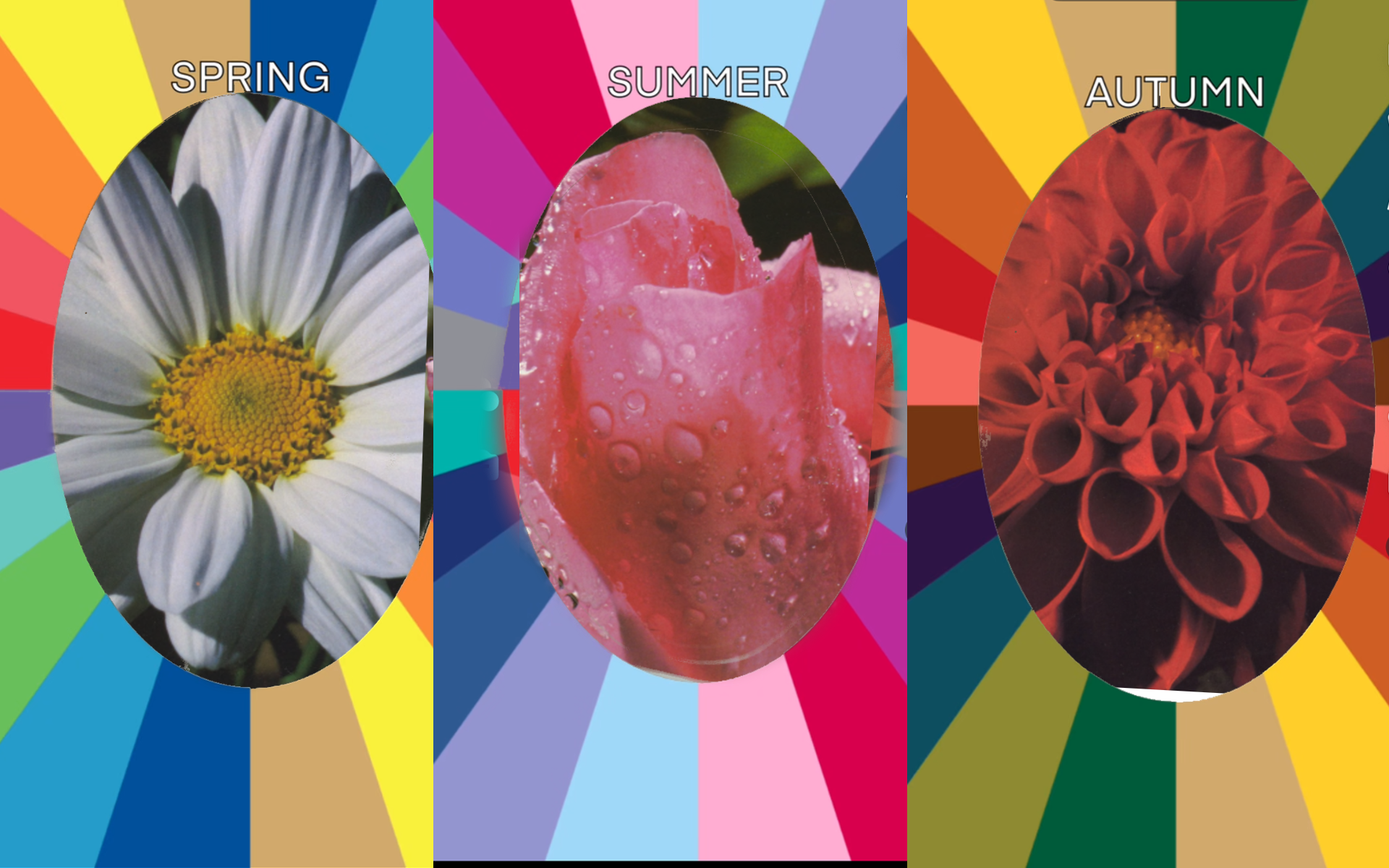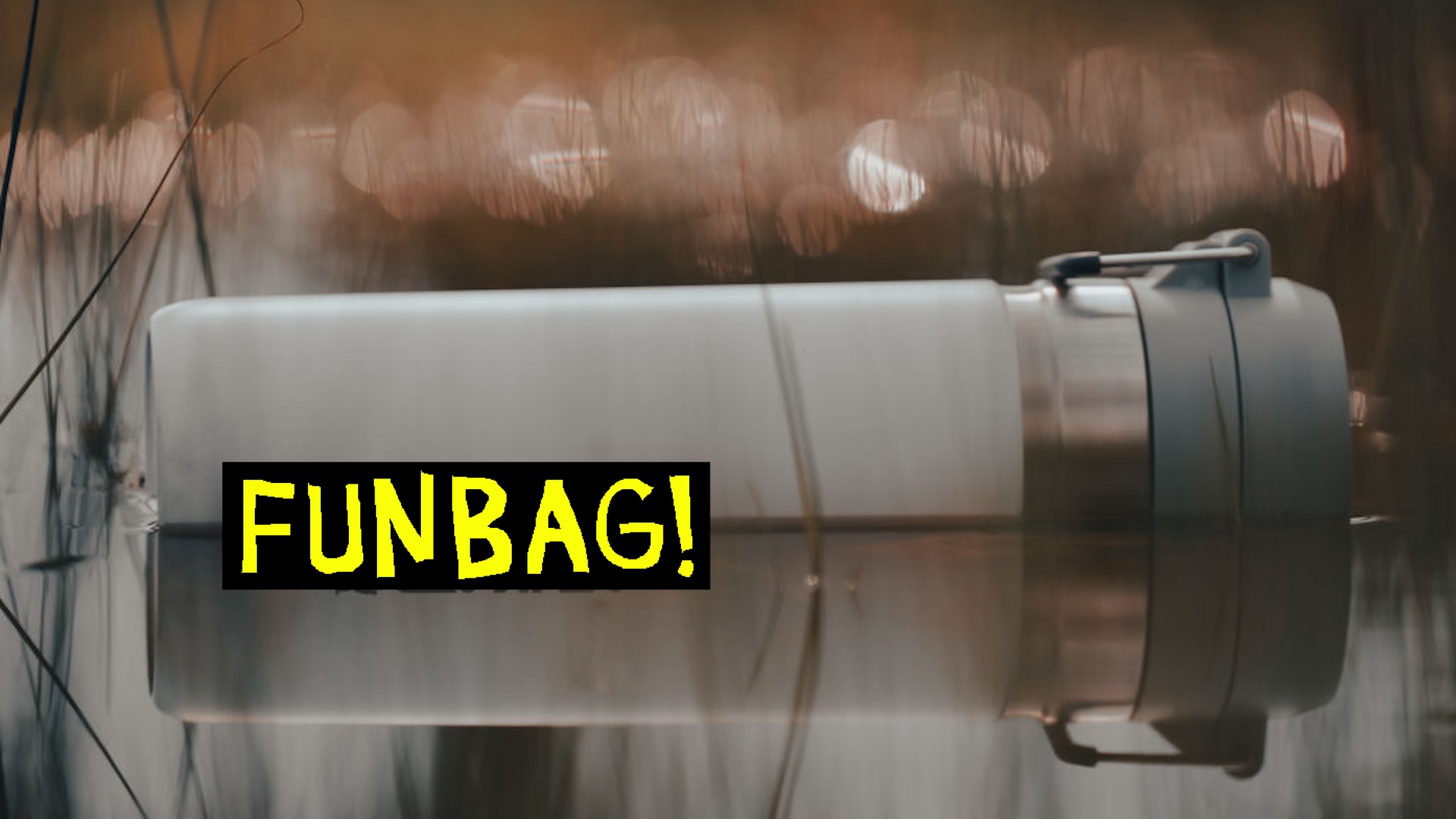There are half a dozen filters on TikTok right now that you can shove your face into in the pursuit of self-realization. The better ones are made by Magnifisenses, who is a self-described color analysis expert and filter creator. The filter I see most often is radial, your face the center of a flower and the petals various colors. Tap the screen, and the colors around your face change. There is a season associated with each: the soft, subtle colors of spring; the stark contrasting colors of winter; the muddied tones of autumn; the vibrant hues of summer.
In another filter, there are four of you. One of your faces hovers inside a color block, one for each season. In yet another, a drape of fake fabric appears across your shoulders, right up against your face. Tap the screen, and it too will change colors. In another, you have only two faces, one suspended in a river of silver, one in a river of gold. The more complex filters make things even more complicated. Instead of four seasons, there are subcategories for each. Are you a "light spring"? Or maybe a "cool winter"?
Go ahead, shove your face into the filter. Do you look better in silver or gold? Who determines what "better" means? Good questions. The hundreds of color analysts who work on TikTok promise that the best colors for you will make your eye bags disappear. You will look younger, happier, more beautiful, more you if only you can figure out which colors to wear! Hurry, use the app!
Maybe you have been wearing the wrong colors all this time!! Post a video of yourself with the filters. Let the community help you figure out what season you are.
This whole circus of colors has been going on on TikTok for years, but in the past few weeks the influx (at least on my algorithim) is dramatic. A video posted four days ago, with 1.2 million views already, shows a young woman posing in the filter. Which colors are hers? Who is she? Please, won't someone help? In the comments, the answers vary. Some people are certain she is a winter. Some adamantly insist summer. If we, the hivemind, cannot figure it out, there are always people you could pay to help you.
These people, actual color analysts, are also on TikTok, posting videos in which they hold up swaths of fabric to people's real life bodies, determining which colors are most flattering.
I have watched hundreds of these videos now, mesmerized not by people's color palettes, but by the kind of frantic searching that hides beneath this question. There are real truths about how colors interact with one another; anyone who has ever painted knows this. But there is something unsettling and bleak about this pursuit of personal knowledge through the dictation of other people, this inability to see oneself and the assumption that other people know you best. What are you looking for when you make your face the flower? Who do you see, eyes dead, looking back out at you?
When I was in middle school, my mom took me to the Clinique counter at the mall. Like all teens, I had acne, and like many teens, I had taken to scrubbing the waterlines of my eyes with dark black eyeliner and listening to My Chemical Romance. I am very light-toned: a natural blonde, gray eyes, skin that will burn if it even thinks about stepping outside on a cloudy day without sunscreen. Irish, really.
Black eyeliner, the woman at the counter told me in no uncertain tone, is not the best color for a light-toned girl. It is too harsh. It is too stark. It makes your eyes look smaller and watery. What I wanted, she assured me, was brown eyeliner. It would be more flattering. Look more natural.
But I did not want to look more natural. I was a teen! I wanted to look, if anything, less natural! I wanted to look cool. And so I ignored the woman at the counter's advice. I wore black eyeliner well into my twenties before my makeup taste shifted, and I regretfully began wearing the red-brown color she had recommended in the first place.
Color analysis is not a new idea. Only the filters are new. Scientists have studied how we perceive color and how it interacts with light since the early 20th century. In the mid-20th century, those skills began to be applied to fashion (for mainly white women). “Every woman should know what colors are becoming to her; they will always be her subjective colors and their complements.” Johannes Itten, a Swiss architect wrote in his 1961 book The Art of Color, which put forth the idea of “seasons.”
Itten dictates that your body keeps your colors. Your natural skin, hair, and eyes determine which colors will complement you. This is objectively true. Not everyone, for example, can rock a florescent color, but those who can look remarkable. In fact, much of the early literature on color theory is more about finding yourself, and communing with your truth, than packaging yourself to look as good as possible.
“Not to be, like, cliche," Lakyn Carlton, an LA-based stylist, wrote on Twitter, "but the best colors for you are the ones you really like wearing! I’m not anti–color work, I just don’t think it’s some necessary code to crack. Color choices are just as personal as style, it doesn’t have to be based on anything!”
In the introduction to her 1980 book Color: The Essence of You, Suzanne Caygill wrote: “With the nurture and security of color as personality identification, there has developed in these individuals: a sense of unity; a profound appreciation of the universe and of other human beings; a deepened appreciation of the universe and of other human beings; a deepened understanding of oneself and others; and a dynamic use of personal energies and creativity.”
Caygill’s approach to color is far more mystical than any algorithm. She believes in the power of color as a mood changer, and as a way to signal who you are. She argues that we all have a kind of innate taste. As an example, in the book, she writes about bringing a bunch of people to paint a still life of red roses. Even though they were looking at the same bunch of roses, the color palettes of each painting, she says, are different, and each align with the colors those individuals were wearing. She too, uses seasons. So an autumn coloring paints in autumn colors; a spring coloring paints in spring colors.
Caygill uses the seasons, she says, because nature’s palettes are perfect. Her book has lots of photos of flowers. She is not creating a a circle that you shove your face into on an app on your phone. What Caygill is describing is taste.
When I lived in Washington, D.C., I used to visit The Phillips Collection on weekdays when I was supposed to be writing. Sometimes, all a person needs to reset their brain is one painting. I was a member, so I could go, find one thing that was intriguing enough to reset me, and leave.
Some days there would be elementary school classes in the museum. Once, I watched the curator play a game with the children. They were in a small gallery with 15 or so paintings. The curator encouraged the children to look at each one, and then remain standing under the one they liked best. She then went around and asked the children, why that painting? Why choose this one over all the others?
When they spoke, the children described the elements and principles of art. They talked about contrast, about line quality, about shape, and negative space, and color. They knew all of these things innately without training perhaps because art comes from us, and we are its makers. As Picasso once said, “Every child is an artist. The problem is how to remain an artist once we grow up.”
We know, inherently, deep down, what we like. What foods we want to eat, what colors we want to wear, what paintings we want to stand under and align ourselves with, and which ones we would be happy never to see again. That is not something you have to be taught. It is something we are untaught every day, by a world that tells us that we know nothing, that there is a "right" thing to like, and want, and be. But that's a lie, and it limits the experiences we are able to have in the world.
“Mostly, cultivating my taste has meant honoring a commitment to remain curious about the world, to indulge my desire to learn as much as I can about something that piques my attention, to be unafraid to change my mind," Tahirah Hairston wrote in her newsletter Ridiculous Little Things. "It’s a constant pursuit, with ebbs and flows as I grow and change.” That ebbing and flowing, I think, is part of being alive. It is part of learning who you are and who you want to be. It is difficult, sure, but skipping the step of self-discovery because a filter on an app told you exactly who you should be (or more likely, a bunch of strangers you'll never meet chose your fate for you with their own biases), is exactly the kind of future that terrifies me. It takes away our opportunity for self-discovery. It replaces the pursuit of self-knowledge with something shallower, and stupider, and uglier.
Someone once asked Jemima Kirke in an Instagram Q&A if she had advice for unconfident young women. Kirke responded, “I think you guys might be thinking about yourselves too much.” The problem here is bleaker. We are teaching people to think about themselves only within the context of how they are perceived by others: as if reading criticism of a film about one's life is a more authentic and purposeful way of engaging with the world than actually living in it.
In the most upsetting version of self-color analysis I've seen on TikTok, people take a photo of themselves, use the eye-dropper tool to learn the hex-code for the color of their hair and eyes and skin, and then give those color codes to ChatGPT and ask the program to tell them what season they are.
I understand the impulse here. It is so much easier to ask a robot to tell you which colors you look good in than to face the failure of trying on things that make you look weird, or make you feel bad. Of course anyone could be tempted by a shortcut to self-actualization. That's capitalism, baby. Pay someone to tell you what you should look good in, and then blow money buying new things to fit your new self.
But that process will never be satisfying, because we are not dolls. We are people, with preferences and dreams and ideas for how we want to feel. You cannot purchase your way to seeing yourself. You cannot use an app to learn who you are. Your colors are the ones you want, deep down, and only you can determine that.





